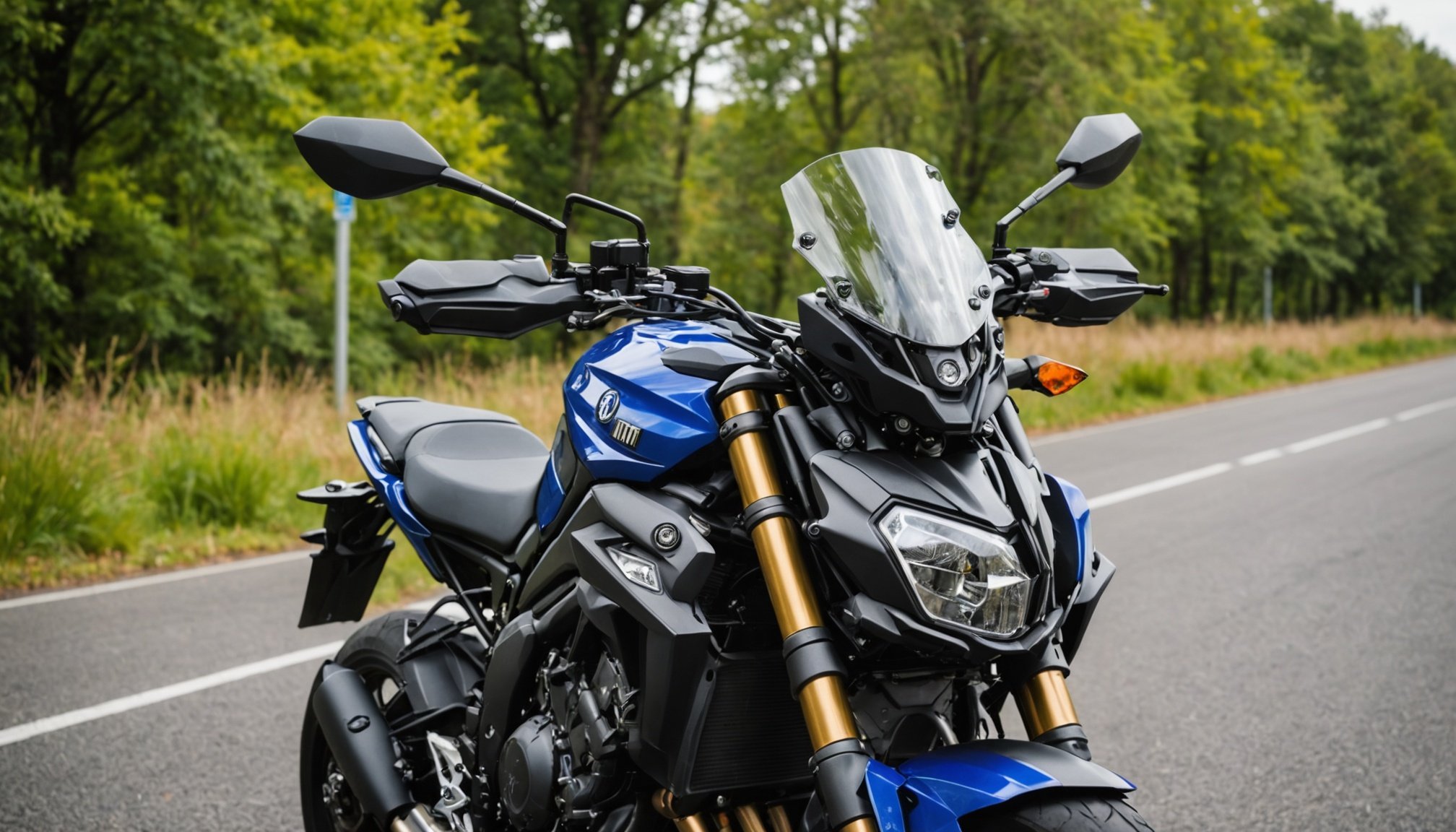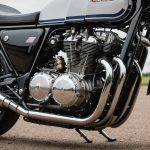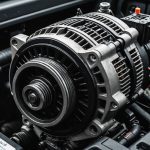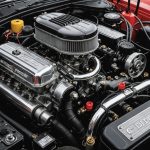Overview of the Yamaha MT-07 Windscreen Upgrade
An aftermarket windscreen is a valuable Yamaha MT-07 upgrade that significantly enhances rider comfort. The primary appeal lies in increased wind protection, which is crucial during long rides or high-speed adventures. This upgrade reduces wind pressure on the rider’s chest and shoulders, allowing for a more enjoyable riding experience.
One major benefit of opting for an aftermarket windscreen is its ability to offer customisable solutions tailored to individual preferences. Riders often choose these upgrades for features like improved aerodynamics, enhanced aesthetics, and versatile adjustability. The designs are specifically crafted to minimise turbulence and maximise efficiency, which directly translates to a smoother, quieter ride.
Also to read : Step-by-Step Guide to Inspecting and Adjusting Valve Clearance on Your Honda CBR1000RR
Aftermarket windscreens typically share certain common features, which include durable materials like acrylic or polycarbonate for improved longevity. These materials are not only resistant to impacts and scratches but also lightweight, which maintains the bike’s balance and agility. Additionally, the installation process is often straightforward, with easy-to-follow guides accompanying the product.
In summary, investing in an aftermarket windscreen for your Yamaha MT-07 ensures enhanced wind protection and overall riding comfort. The diverse range of available options allows riders to choose a suitable upgrade tailored to their unique needs.
Have you seen this : Ultimate Guide to Conducting a Compression Test on Your Honda CBR600RR for Engine Health Assessment
Tools and Materials Required for Installation
Embarking on an installation project requires the right set of installation tools and materials to achieve optimal results. For a successful Yamaha MT-07 aftermarket windscreens installation, here are the essentials you need:
Essential Tools
-
Screwdrivers: Both Phillips and flathead varieties are indispensable for removing and securing screws. Ensure they are in suitable sizes to avoid damaging the screws.
-
Allen Keys: A set of these is crucial for dealing with the bolts commonly found in motorcycle assemblies. These will aid in smoothly attaching aftermarket parts.
-
Torque Wrench: Ensures bolts are tightened to the manufacturer’s specifications, maintaining safety and performance.
Recommended Aftermarket Windscreens
When considering motorcycle accessories, aftermarket windscreens are a popular choice for the Yamaha MT-07. Brands like Puig and MRA offer high-quality, aerodynamically efficient options that enhance both style and comfort.
Additional Materials
- Rubber Gloves: Protect your hands from grime and provide a better grip during installation.
- Thread Locker: Keeps screws and bolts in place, preventing them from loosening over time.
- Cleaning Cloth: Essential for wiping down both the windscreen and mounting areas to prevent debris interference.
Arming yourself with these tools and materials will streamline your installation process and ensure a professional finish.
Step-by-Step Installation Process
Installing an aftermarket windscreen on your MT-07 isn’t as daunting as it might seem. Embarking on this installation journey, let’s demystify the process with a thorough MT-07 installation guide to fit your new windscreen smoothly and securely.
Removing the Stock Windscreen
Begin by carefully removing the stock windscreen. Ensure your bike is stable to prevent any accidental slips. Use the appropriate tools to unscrew the bolts. Keep these bolts secured as they might be required later.
Preparing the New Windscreen for Installation
Before you proceed with the windscreen fitting, ensure the holes align with those on your bike. Pay attention to the curvature and the fit of the windscreen. This step is crucial for a secure fit, helping avoid unnecessary flutter during rides.
Attaching the Aftermarket Windscreen
With precision in mind, align the new windscreen with your bike’s frame. Secure it using the bolts previously removed, or any supplied fasteners if recommended. It’s essential to tighten these evenly, ensuring a snug and secure install.
Tips for success:
- Avoid overtightening which might crack the new screen.
- Ensure all fitted components are firmly in place.
- Test the stability by gently shaking the windscreen post-installation.
Safety measures during this installation process must be adhered to, ensuring not just a perfect fit but also a safe biking experience.
Adjustments and Fine-Tuning After Installation
After installing a new windscreen, making precise adjustments can substantially enhance your riding experience. Firstly, windscreen adjustments are crucial to improve overall wind protection and maximize riding comfort. To begin, ensure the windscreen’s angle and height align with your field of view, allowing for optimal deflection of wind over your helmet rather than directly onto it.
Testing on a short test ride is essential to evaluate the windscreen’s effectiveness. During the ride, pay attention to any turbulent air that might be hitting your body or face. This feedback will guide you in determining whether further adjustments are necessary.
Fine-tuning your windscreen based on personal comfort preferences is a tailored process. If experiencing neck strain or excessive noise, try altering the angle. If wind buffeting remains an issue, adjusting the height might help. Personal comfort is paramount, and slight variations can have a significant impact on overall stability and tranquility.
- Suggestions for fine-tuning include:
- Lower or raise the windscreen to see the difference in wind protection.
- Adjust the tilt to direct air over or around you.
- Consider the type of riding you do most often; long-distance rides might require different settings than short, city commutes.
These steps ensure that your windscreen is optimized for the best possible riding experience.
Impact of the Aftermarket Windscreen on Riding Experience
Experiencing the thrill of riding long distances can significantly improve with the right wind protection. For Yamaha MT-07 riders, a well-chosen aftermarket windscreen can offer significant riding experience enhancement by reducing wind resistance and increasing comfort. While on a long ride, battling against the wind can be tiring and uncomfortable, distracting from the joy and adventure of the journey.
Adding a windscreen helps to minimize this resistance, allowing for a more relaxed posture and less strain on the upper body. The windscreen acts as a barrier, redirecting airflow over and around the rider—a primary factor in heightening comfort on prolonged trips.
Feedback from various Yamaha MT-07 owners highlights that while the implementation of a windscreen is popular, it often leads to aesthetic trade-offs. Riders sometimes weigh the comfort improvements against the bike’s sleek look and styling. Not all are willing to compromise visual appeal for practicality.
However, many agree that the practical benefits override concerns about appearance. Ensuring enhanced stability on windy days and reducing fatigue translates to a safer and more pleasurable riding experience. For those considering this addition, it is crucial to balance personal preference for style with the functionality offered by an aftermarket windscreen.
Maintenance and Care for the Aftermarket Windscreen
Caring for your windscreen involves essential maintenance practices that ensure its longevity and performance. A critical aspect is following best practices for cleaning the windscreen to maintain visibility and prevent damage. Use mild cleaning solutions and soft, non-abrasive cloths to avoid scratches. Avoid ammonia-based cleaners as they can deteriorate any tinting or coatings on the glass.
Regular Inspections
Performing regular inspections is crucial to ensuring secure fittings. Check for any signs of wear and tear around the edges where the windscreen meets the vehicle body. This can help identify potential issues before they become serious problems. If you notice any chips or cracks, address them immediately to prevent the need for a full replacement.
Protecting Against the Elements
Weather protection is equally important in windscreen maintenance. Park in shaded areas or use a car cover to shield the windscreen from harsh UV rays, which can weaken and discolour the glass over time. In colder climates, use de-icing products; avoid hot water, which can cause the glass to crack. Ensure your windscreen wipers are in good condition to prevent them from scratching the surface during use. Following these care tips can significantly extend the lifespan of your aftermarket windscreen, providing safety and clarity on the road.











